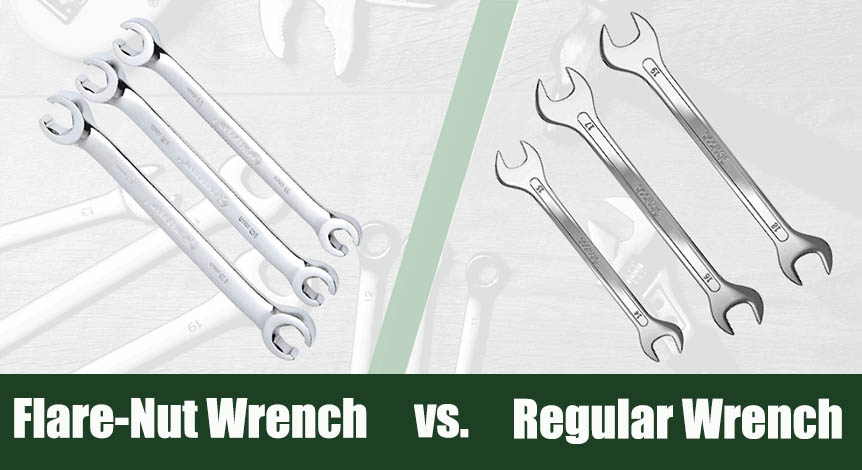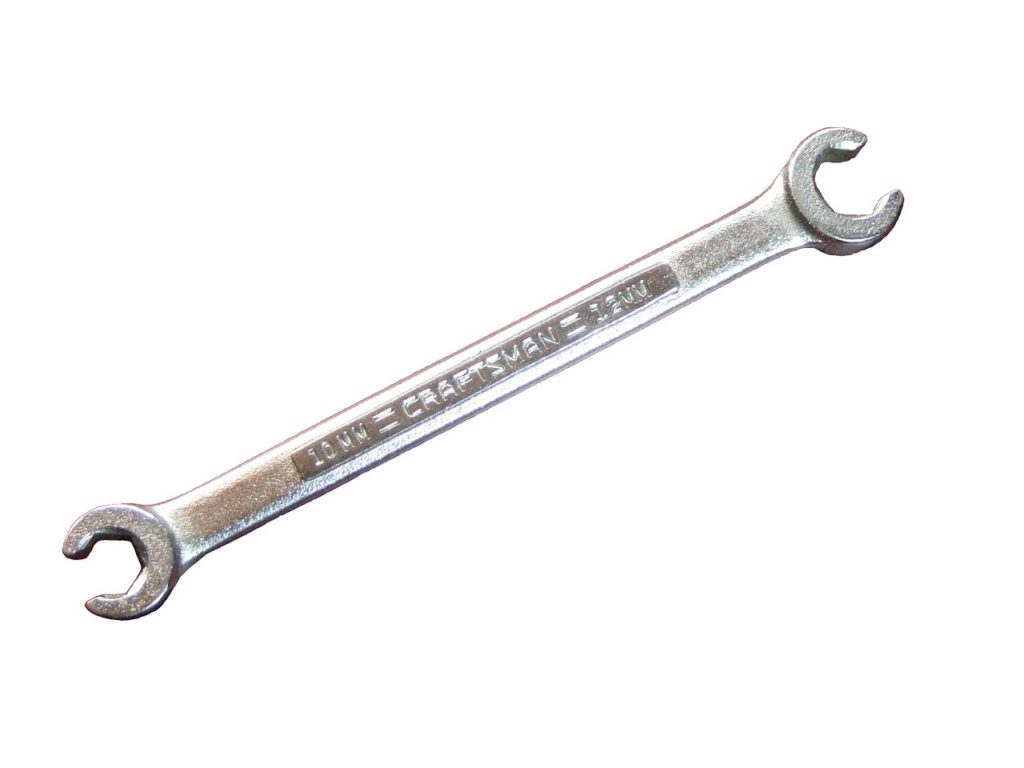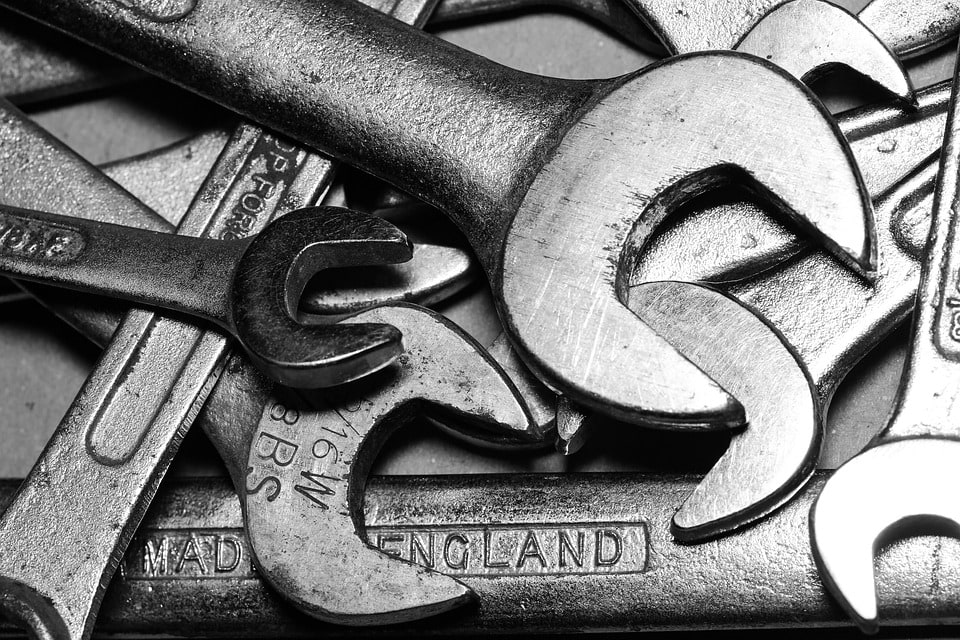Flare-Nut vs Regular Wrench: Which is Best for Your Needs?
-
Pete Ortiz
- Last updated:

The wrench is an incredibly versatile tool to have on hand, and there are so many models for specific purposes. Two popular types are the flare-nut and regular wrench. Though they’re both useful, each one comes with its advantages and drawbacks.
Simply put, what distinguishes these two wrench types is their head shape. The flare-nut has five sides, while the regular only has two. This makes them ideal for different scenarios. To find out which wrench is right for your needs, read on. We’ll discuss the flare-nut wrench and the regular wrench thoroughly and give you advice on which one you should get.
Overview of the Flare-Nut Wrench
The flare-nut wrench is a specific type of wrench with five sides. It is open-ended so that it can be used for hexagonal nuts and fittings. Many people mistake the flare-nut wrench for a box or ratchet wrench, but ratchets don’t have open heads. The flare-nut’s head has a 15-degree angle with grooves so that the wrench fits tightly over different-sized flare fittings and hex nuts.
Many flare-nut wrenches are double-sided. This will allow you to loosen tight fittings quickly and smoothly without readjusting. Additionally, the open head lets you loosen nuts and fittings without the risk of stripping.

Advantages
Flare-nut wrenches are advantageous because they have more powerful gripping power. the five-sided design makes it much more snug around different nuts. As a result, it is better at loosening or tightening nuts than the regular wrench.
Flare-nut wrenches also have shorter handles. Though a shorter handle does not provide as much leverage as a long one, it makes them more suitable for tight spaces. This is especially helpful since many tight spaces, such as under a car’s hood, will require a tighter grip and shorter handle.
Disadvantages
The flare-nut wrench is not the most durable type. The sides of the jaw are thinner than regular wrenches. This makes them weaker and more susceptible to breakage. If you use a flare-nut wrench too roughly, it is easier to snap. If you accidentally snap the wrench, the broken piece can fly off and injure someone.
Another downside of the flare-nut wrench is the lack of versatility. Although the flare-nut wrench is highly advantageous for certain jobs, it isn’t as versatile as the regular wrench. So, you’ll only use a flare-nut wrench for specific jobs, and some people might not need a flare-nut wrench.
Best For
Flare-nut wrenches are best for tightening or loosening hexagonal nuts and fittings. This makes them useful for working on cars or plumbing. Auto workers use flare-nut wrenches frequently, and they’re great for securing brakes and clutch lines. You can also use them for fuel pumps and temperature sensors. The plumbing industry also uses flare-nut wrenches often because of the enhanced use of the hex nut shape for flare fittings.
- Tight grip
- Short handle
- Not very durable
- Not as versatile
Overview of a Regular Wrench
Most people are pretty familiar with the regular wrench, but it is helpful to look at it in more detail. Though there are many types of regular wrenches, the U-shaped wrench is the most popular. It is often used to grip opposite faces of a bolt or nut. It usually has oriented ends that are angled at 15 degrees. This allows the wrench to provide a greater scope of movement.

Advantages
Since the regular wrench is used frequently, it is advantageous to keep a regular wrench in your set because you can use it for a variety of purposes. The U-shape design can fit most shapes or designs. Another advantage of the regular wrench is that it has a form-fitted design. This design allows it to be more powerful, making it a great option if you have greater bolt needs. Additionally, this design minimizes the chance of breaking the wrench or bolt.
Regular wrenches are also much more durable than flare-nut wrenches. The sides of each jaw are thicker, which makes them less likely to break or snap. The enhanced durability of the wrench saves you money and makes accidents less likely to occur. Another advantage of regular wrenches is that they are affordable and easy to find.
Disadvantages
The versatility of the regular wrench comes with a drawback. Notably, the more versatile and less specific design does not provide the strongest grip around certain nuts. Because of that, you are at greater risk of having an accident when using this wrench for oddly shaped or small nuts.
Additionally, many regular wrenches have very long handles. Although a long handle will give you more leverage, it also means that wrenches of this length are less suitable for tight spaces. When working on automobiles or in other small areas, you may find a regular wrench to be too long to get the job done.
Best For
Regular wrenches are better for general use and big bolts. Because of their durability and nonspecific design, you can use them for many purposes. The regular wrench can be great for just about everything except tight nuts.
- Highly versatile
- Form fitted design
- Durable
- Easy to find
- Weak grip
- Long handle
Flare-Nut Wrench vs Regular Wrench: A Detailed Comparison
Design
Edge: Depends
Both the flare-nut wrench and regular wrench have a head and handle. Generally, regular wrenches have longer handles than flare-nut models, but that can depend on the exact model. As for the head, a flare-nut wrench is five-sided. A regular wrench, on the other hand, will have a two-sided head that looks like a U.
The five-sided design of a flare-nut wrench makes it better at gripping nuts, but it also means that it is less durable. Conversely, the two-sided head on the regular wrench makes it more durable but less powerful at gripping.
Power
Edge: Depends
Flare-nut wrenches have more gripping power and can snugly grip small nuts and other fitted hoses. On the other hand, the U-shaped design of regular wrenches doesn’t fit or grip as tightly as flare-nut wrenches.
However, regular wrenches have more leverage than flare-nut wrenches. This is advantageous in some scenarios but disadvantageous in others.
Durability
Edge: Regular wrench
In terms of durability, the regular wrench wins. Since it only has two sides, each is thicker, making them stronger and more durable. Flare-nut wrenches, in comparison, have thinner sides that are more susceptible to breaking.
Price
Edge: Neither
As for price, both wrenches are affordable. You may be able to find regular wrenches a bit easier, but you should have no problem finding either model at a reasonable price.

Which Is Best For Me?
| Scenario | Which Wrench To Get |
| Plumbing | Flare-nut wrench and regular wrench |
| Automobiles | Flare-nut wrench and regular wrench |
| Small nuts | Flare-nut wrench |
| General use | Regular wrench |
| Bolts | Regular wrench |
| Budget | Flare-nut wrench or regular wrench |
Deciding between a flare-nut wrench and a regular wrench can be difficult since they are similar and have substantial advantages and disadvantages. Using a flare-nut wrench is best if working with small nuts, especially for automobiles and plumbing projects. On the other hand, you might want to get a regular wrench for everyday use.
When to Get a Flare-Nut Wrench
Because of the shape of flare-nut wrenches, they’re essential if you work in the automobile or plumbing industries. The open five-sided design ensures you can easily grip nuts to tighten or loosen them easily.
If you don’t intend to work on automobiles or plumbing, you may not need a flare-nut wrench. Ultimately, you’ll use a flare-nut wrench for tightening or loosening smaller nuts.
When to Get a Regular Wrench
No matter your profession or interests, having a regular wrench is handy. Luckily, the regular wrench is incredibly affordable, so you won’t have to spend a lot of money on a tool you might not use that frequently. You should use a regular wrench to tighten or loosen larger bolts, but regular wrenches are unsuitable for small nuts.
Conclusion
The flare-nut wrench and regular wrench are both useful, but you should select the flare-nut wrench when working on nuts, especially with automobiles or plumbing. Regular wrenches, on the other hand, are better for bolts and general use.
If you aren’t sure what your intended use will be, we recommend getting a regular wrench. It is much more versatile. Luckily, both types are inexpensive, and you might want to buy both if you are unsure which one you need. Chances are, you will use both at some point in your life.
Contents



